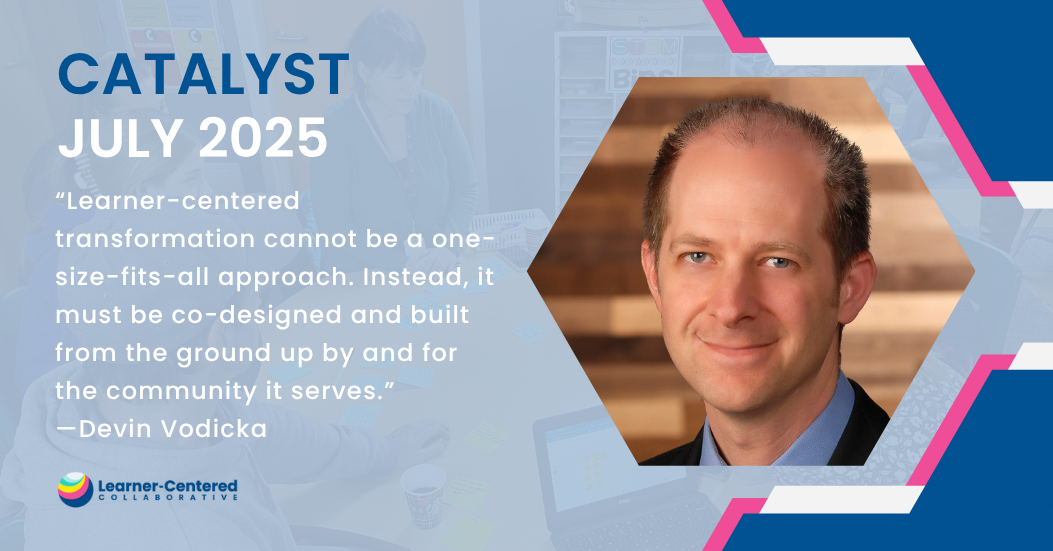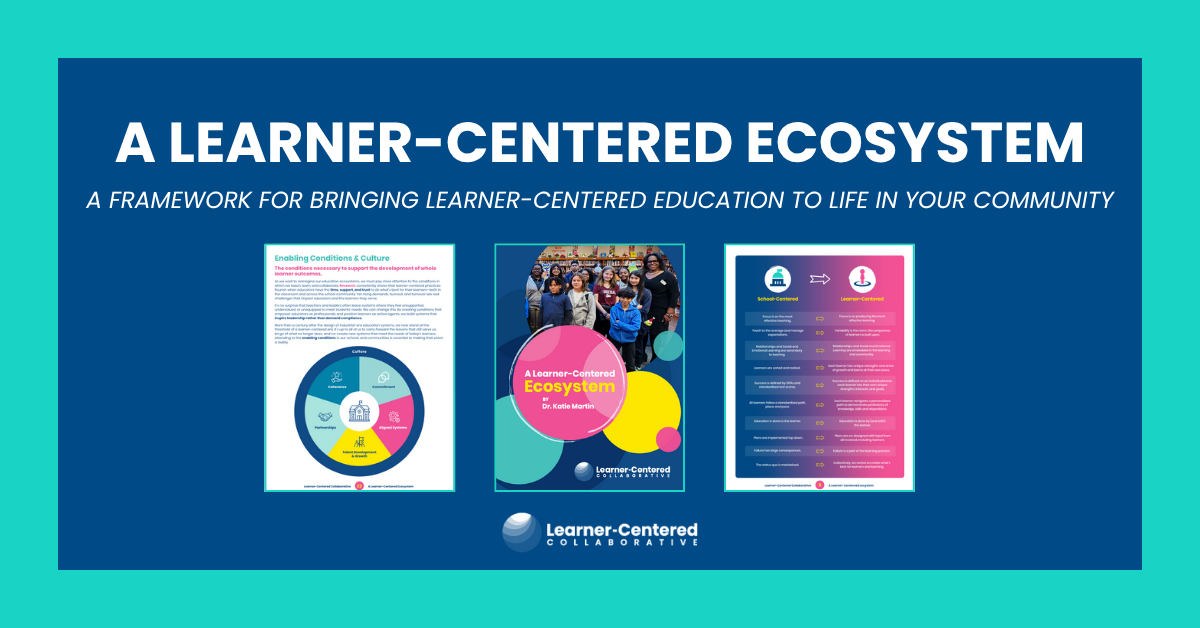5 Ways to Bring More Inclusion and Equity into Your Classroom
What does an equitable and inclusive classroom look like, feel like, sound like? This question fascinates me. I carefully searched for sessions at ISTE this year that would provide answers. First and foremost, let’s align on a definition: in an equitable and inclusive classroom every student has equal access to learning, is treated fairly and equitably, feels supported by their peers and teachers, and feels comfortable using their voice.
We all want our students to feel comfortable, supported, and valued on their educational journeys, yet embedding these qualities into practice is not always a given. Here are my top 5 takeaways, along with resources, from my learnings at ISTE 2022, my experience as an educator, and my own self-exploration to make your classroom an equitable and inclusive space where students (and teachers) thrive as their best selves.
It Starts with YOU
I have dug into this idea of equity and inclusion in the classroom over the past few years, and everything that I learned made perfect sense to me, or so I thought. Some of my explorations over the last several months, and many of the sessions I attended at ISTE, caused me to hold a mirror up to my own experiences and my own biases. There were difficult conversations and surprising revelations, but an eventual comfort in knowing that with some adjusted thinking and mental elbow grease, I could provide an equitable and inclusive space for those around me in every part of my life, not only in a classroom. For real equity and inclusion to happen, I needed to not only acknowledge my experiences and my biases, but open myself up to listening to others’ experiences and understand how they differed from mine. This is where it all starts – with you, or in this case – ME! If you would like to dig into this a bit more, check out this article: 5 Keys to Challenging Implicit Bias.
Classroom Space
You may think to yourself, how does use of classroom space affect equity and inclusion? There are ways you can set up your classroom to make students feel included, promote conversation, and enhance collaboration. I constantly changed the arrangement of my classroom to facilitate student engagement and collaboration. Some weeks we were in groups of four, others we were in pairs or a semi-circle, and so on through various other configurations. Here are a few points to focus on when thinking about classroom arrangement:
- Is your classroom set-up conducive to collaborative learning? Arranging desks in groups will help facilitate collaborative work.
- Where do you place yourself as the teacher? Consider moving amongst students to minimize a student-teacher hierarchy. This will promote conversation and collaboration.
- Vary groupings of students: pairs, trios or quads can go far to engage students with each other and with what they are learning.
For more on arranging your classroom for inclusivity, check out this blog: 23 Tips for Designing and Arranging Your Inclusive Classroom.
Planning with Purpose
When thinking about planning for instruction, it is important to make a conscious effort to reflect on the resources you will use, the discussions that will take place, and the variety of ways for students to show what they know.
- Resources: Take a deep look at the resources being used to instruct your students. Do students see individuals that look like them, sound like them, represent them? Are they easily accessible by all students, even those with challenges?
- Discussions: Spend some time constructing a process for how discussions in your classroom will take place and how you will ensure equity of voice. It is important to create a space where students feel comfortable sharing their stories and experiences and taking risks. This does not just happen. It is best to put some co-constructed guidelines in place.
- Variety of Ways to ‘Show What You Know’: Do you offer multiple ways for students to practice their learning and to show what they know? Choice for students is a powerful tool to make them feel included and engaged. One of the sessions I attended at ISTE had some wonderful resources for injecting choice into student learning. Check them out:
• Interactive Learning Menus with GSuite – FREE Templates
• More Differentiation Ideas
• Building Equity into Your Assignments with Choice Boards
Involve Families and Community
Once we get to know our students, we realize there is much diversity of experience, cultures, and backgrounds, and that families and friends can enrich our classroom with their stories and their voices. What better way to make students feel valued and included than a member of their circle sharing their experiences with the class. I remember a time when I was reading October Sky with my 8th grade class. One of the students offered that his grandfather had worked in the coal mines. Since coal mining is central to the story, he asked me if his grandpa could speak to the class. I was thrilled to have his grandfather share stories from the mines. He not only regaled us with tales of his time in the mines, he also brought in many pieces of the equipment used, demonstrated different pieces and let the students touch and pick up the gear. To hear from someone who had experienced firsthand what they were reading made the story come alive and engaged them deeply in the lives of the miners. Read this short article for other ways to engage family in a student’s learning: 10 Ideas for Engaging Parents.
Incorporate Student Voice
Over the years, I worked diligently to involve my students in planning, co-constructing classroom rules and rubrics, as well as choosing how they would show their learning. There are many ways to incorporate student voice, but here are a few ways to get started.
- Entrance and Exit Tickets: Both of these are extremely simple to include into your instruction. “Entrance Tickets” are completed as the students enter the classroom. These can be prompts such as “What was tough about last night’s homework? What was easy?” “What is something you still don’t understand from what we have learned so far?” “Exit Tickets” typically consist of things like “What was the most valuable learning from today?” What do you feel really good about from today’s learning? What might take more time?” These are very simple and powerful ways to listen to your students’ voices. For some exit ticket templates, click this link: 24 Printable Exit Tickets
- Wow! Activity: This was a quick, impactful tool shared in a session at ISTE to incorporate more student voice in the classroom. It can be used in many ways: check-ins, exit or entrance tickets, team-building, getting to know you. Check it out: Wow! Activity.
- Brainstorm – Including your students in things like developing classroom rules and processes, ways to attack their learning of standards or concepts, or co-developing scoring rubrics is a powerful way to incorporate their voices across the curriculum. The most important piece of brainstorming is to effectively collect the data and put it to use. To help you do this, check out this link to Mind Mapping and Brainstorming Apps and Websites.
Explore more: 3 Ways to Include and Amplify Student Voice
My journey to understanding how to promote equity and inclusivity in the classroom has been a long, winding, and extremely rewarding road. I have learned to provide a richer environment for learning and communication and a much more engaging space for all. When students feel included and treated fairly, they engage more with their peers, teachers, and the learning process. It may feel like a tall order to create a space for your students that is equitable and inclusive, but these are critical steps that make a big impact.
We’re all learners and I am always happy to discuss any of these ideas or how your learning community can work toward more equitable and inclusive learning experiences. Get in touch with me at rachel@learnercentered.org.







